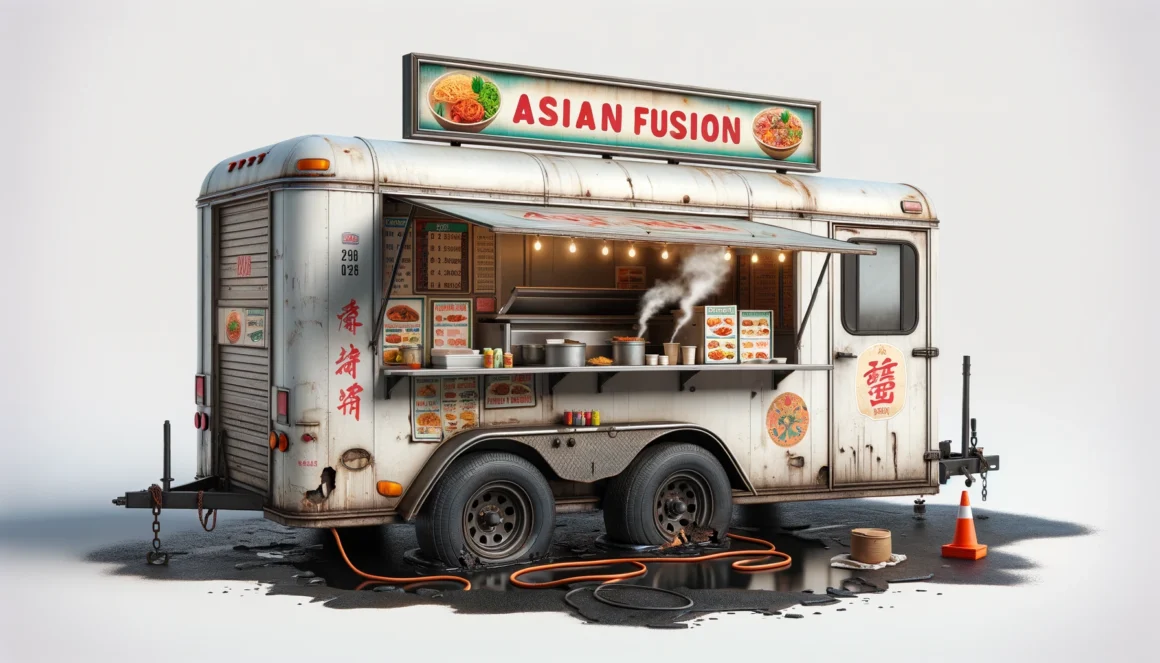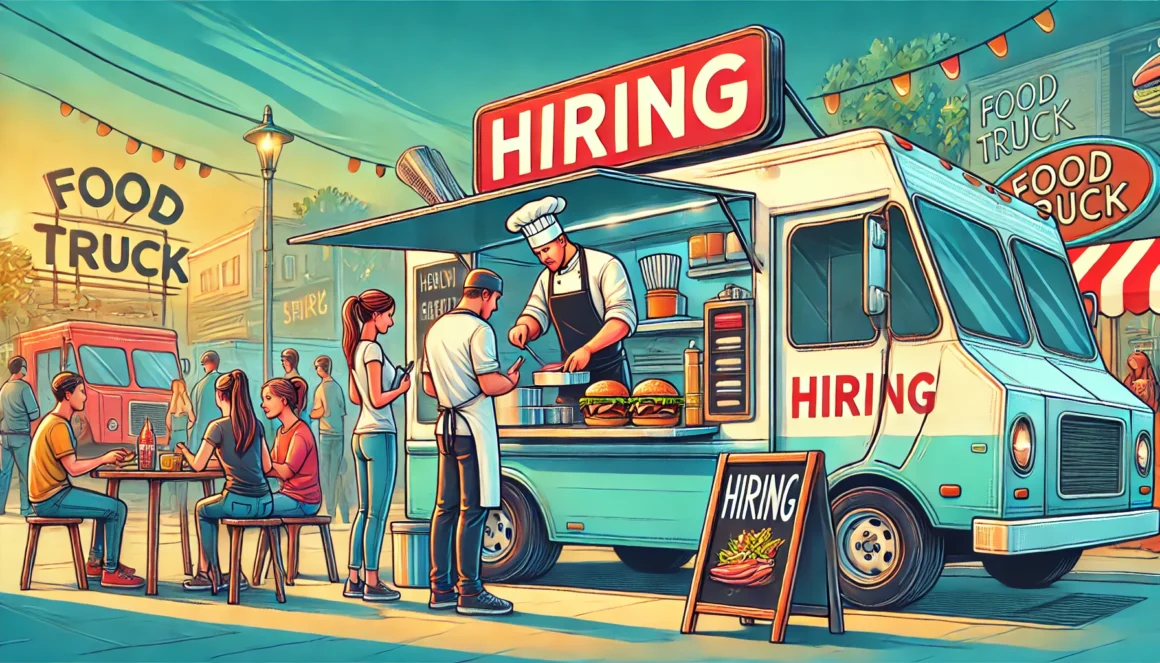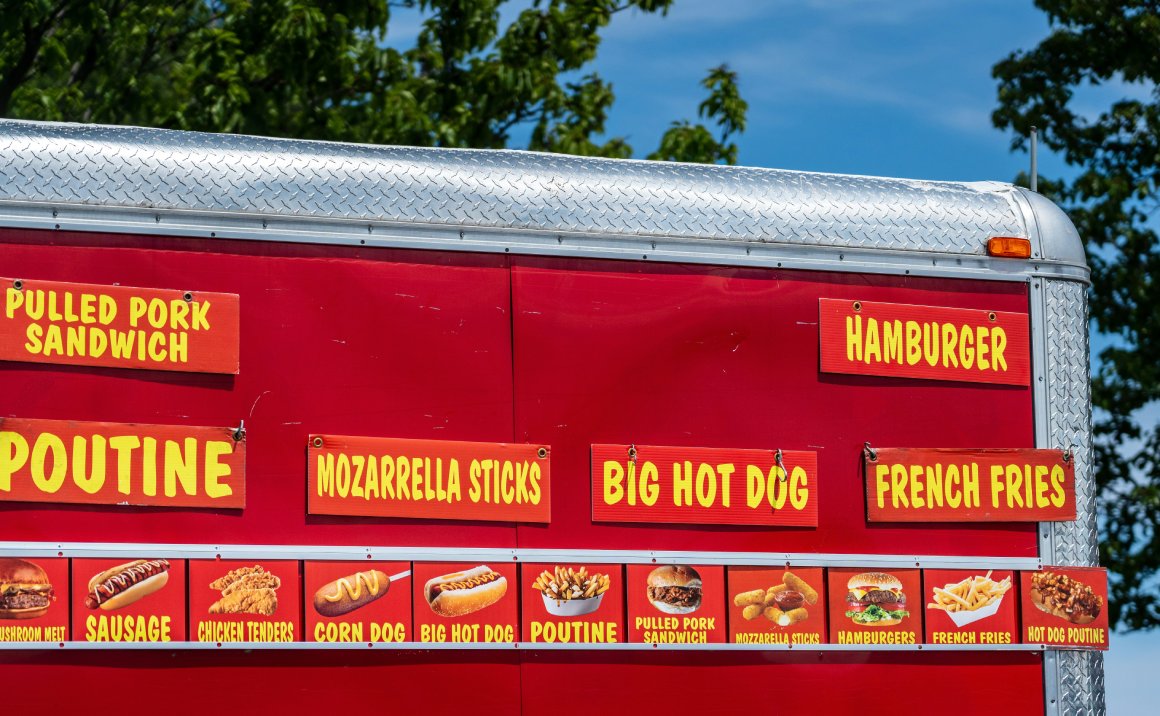
How to Build Customer Loyalty and Increase Repeat Business for Your Food Truck
This post is part of a regular series. Click here to start at the beginning.
Attracting new customers is essential for any food truck, but keeping them coming back is just as important. Repeat customers are the backbone of any successful food truck business, and building long-term relationships with them can lead to steady revenue and positive word-of-mouth marketing. In this post, we’ll explore strategies for creating loyalty programs, building strong relationships with customers, and fostering long-term customer loyalty.
By the end of this guide, you’ll understand how to set up an effective loyalty program, engage with your customers in meaningful ways, and measure the impact these efforts have on your business.
1. Why Repeat Business is Essential for Your Food Truck
Loyal customers are not only more likely to return to your truck, but they also tend to spend more and recommend your business to others. Building a strong customer base of repeat visitors can stabilize your sales, especially during slow seasons or off-peak hours.
Why Focus on Repeat Customers?
- Higher Lifetime Value: A repeat customer is often worth more than a new one, as they’re more likely to make larger purchases or visit more frequently.
- Lower Acquisition Costs: It’s generally cheaper to retain an existing customer than to attract a new one. Focusing on repeat business allows you to maximize your return on investment (ROI) from marketing and promotions.
- Word-of-Mouth Marketing: Loyal customers are more likely to recommend your truck to friends, family, or colleagues, helping you attract new customers organically.
Example: A food truck specializing in grilled cheese sandwiches notices that their repeat customers tend to bring new friends to the truck each time they visit, generating additional sales and building a community around their brand.
2. Creating an Effective Loyalty Program
A well-designed loyalty program can incentivize customers to return to your food truck regularly. Whether you choose a traditional punch card system or a digital rewards program, the key is to make it easy for customers to participate and feel rewarded for their loyalty.
How to Implement This Tip:
- Start With a Simple Punch Card: The punch card system is easy to implement and understand. For every visit, customers earn a punch or stamp, and after a certain number of visits, they receive a reward such as a free meal or discount.
Example: A taco truck hands out punch cards, giving customers a free taco after their tenth purchase. The simplicity of the system encourages customers to return, knowing they’re working toward a reward. - Move to Digital Loyalty Programs for Convenience: If you want a more modern approach, consider partnering with a loyalty app that allows customers to track their rewards digitally. This eliminates the need for physical cards and provides valuable data on customer behavior.
Example: A smoothie truck uses a digital loyalty program that tracks each customer’s purchases and automatically sends a notification when they’ve earned a free smoothie. The app also allows the truck to send special promotions directly to loyal customers. - Offer Tiered Rewards for Bigger Spend: Create different levels of rewards to incentivize larger or more frequent purchases. For example, customers who spend more can unlock higher rewards or exclusive offers.
Example: A burger truck introduces a tiered rewards program where customers earn points for every dollar spent. After reaching a certain points threshold, they can choose between different rewards, such as free fries, a discount, or even a limited-edition menu item.
Expected Results:
- Increased Frequency of Visits: Customers who are working toward earning rewards are more likely to visit your truck more often, especially when they’re close to reaching their next reward.
- Larger Average Order Size: Offering points or rewards based on spending can encourage customers to order more each time they visit.
- Measurable Impact: Track the number of loyalty cards or digital rewards redeemed and compare the behavior of customers who participate in the program with those who don’t. This data will help you refine the program over time.
3. Building Relationships Through Personalized Engagement
Customer loyalty isn’t just about rewards—it’s also about building relationships. When customers feel a personal connection with your food truck, they’re more likely to return and recommend your business to others. Personalized engagement goes a long way in making your customers feel valued.
How to Implement This Tip:
- Remember Customer Preferences: One of the simplest ways to build rapport with your customers is by remembering their preferences. Whether it’s their favorite menu item or how they like their food prepared, small details make customers feel seen and appreciated.
Example: A coffee truck owner remembers that one regular customer always orders a large iced latte with almond milk. The next time the customer visits, the owner greets them with, “Ready for your usual iced latte with almond milk?” This level of personal attention strengthens the customer’s loyalty. - Send Personalized Offers and Discounts: Use your email or loyalty program data to send personalized offers based on customer behavior. For example, if a customer frequently orders sandwiches, you can send them a discount for their favorite sandwich as a thank-you for their loyalty.
Example: A sandwich truck sends an email to a customer who regularly orders the turkey club, offering 15% off their next turkey club purchase. This personal touch keeps the customer engaged and makes them feel valued. - Engage With Customers on Social Media: Use social media to interact with your customers in meaningful ways. Respond to comments, like posts where they’ve tagged your truck, and create polls or ask questions to engage your audience.
Example: A taco truck runs an Instagram poll asking followers to vote on the next taco special. The truck then thanks the participants in a follow-up post and announces the winning dish, making the customers feel involved in the decision-making process.
Expected Results:
- Stronger Customer Relationships: Personalizing your interactions with customers creates a deeper connection, making them feel more loyal to your truck. This can lead to increased word-of-mouth referrals and repeat business.
- Higher Engagement on Social Media: Customers who feel engaged and valued are more likely to interact with your posts, leading to higher social media engagement and visibility.
- Measurable Results: Track customer retention rates and engagement on social media to see how personalized engagement impacts loyalty and repeat business.
4. Hosting Customer Appreciation Events
Hosting special events or offering exclusive deals for your most loyal customers is a great way to show appreciation and build long-term relationships. These events can be small, like offering free samples at your truck, or larger, like hosting a customer appreciation day.
How to Implement This Tip:
- Host a VIP Event for Loyalty Program Members: Create an exclusive event for your top customers, offering free samples of new menu items or discounts on popular dishes. This makes your loyal customers feel special and keeps them excited about your truck.
Example: A BBQ truck invites its most frequent customers to a “VIP Tasting Event,” where they get to sample new menu items before they’re added to the public menu. The event creates buzz and strengthens customer loyalty. - Offer Free Samples on Customer Appreciation Day: Designate a day to celebrate your customers by offering free samples or small bites to everyone who visits your truck. Promote the event through social media and email to drive traffic.
Example: A dessert truck hosts “Customer Appreciation Day” and offers free mini cupcakes to every customer who makes a purchase. The truck promotes the event on Instagram, and foot traffic spikes as customers line up to claim their free treat. - Create a Referral Program for Loyal Customers: Encourage your existing customers to refer new people to your truck by offering them rewards for successful referrals. This not only helps you acquire new customers but also deepens the relationship with your existing base.
Example: A sandwich truck offers loyalty members $5 off their next order for every new customer they refer. The referred customers also receive a discount on their first purchase, creating a win-win situation.
Expected Results:
- Increased Customer Engagement: Special events and appreciation days create excitement and give your customers an incentive to visit your truck, leading to higher foot traffic and sales.
- Stronger Customer Loyalty: Hosting VIP events or offering exclusive deals makes customers feel valued and deepens their connection with your brand.
- Measurable Results: Track the success of your events by monitoring attendance, sales, and customer feedback. Use this data to improve future customer appreciation efforts.
5. Leveraging Customer Feedback for Continuous Improvement
Loyal customers appreciate businesses that listen to their feedback and make improvements based on their suggestions. Encouraging customer feedback and acting on it shows that you value your customers’ opinions and are committed to providing the best possible experience.
How to Implement This Tip:
- Set Up a Feedback System: Provide easy ways for customers to give feedback, whether it’s through suggestion boxes at your truck, online forms, or surveys sent via email.
Example: A coffee truck places a QR code at the counter that links to an online feedback form. Customers can quickly share their thoughts on their experience, and the truck owner reviews the feedback regularly to identify areas for improvement. - Respond to Customer Suggestions: When a customer provides constructive feedback, take the time to respond and, if possible, implement their suggestions. This shows that you’re listening and care about their experience.
Example: A taco truck receives feedback from several customers who say they’d love to see more vegetarian options. The owner adds a vegetarian taco to the menu and announces the new option on social media, thanking the customers who suggested it.
- Highlight Changes Based on Feedback: When you make improvements based on customer suggestions, let your customers know. Announce these changes through social media, email, or at your truck with signage. This reinforces the idea that you’re responsive to their needs and value their input.
Example: After adding a vegetarian taco to the menu, the taco truck posts on Instagram: “We listened to your feedback! Our new veggie taco is now available. Thank you to everyone who suggested this awesome addition!” - Use Feedback to Improve the Customer Experience: Customer feedback isn’t just about adding new items to the menu. It can help you improve other aspects of the customer experience, such as service speed, food quality, or pricing.
Example: A BBQ truck receives feedback that customers often wait too long for their orders during peak hours. The owner adds an extra prep station during busy periods to speed up service and reduce wait times. Customers appreciate the faster service, and it leads to fewer complaints.
Expected Results:
- Improved Customer Satisfaction: When customers see that you’re actively listening to their feedback and making improvements, they’re more likely to feel valued and continue supporting your food truck.
- Stronger Customer Relationships: Responding to feedback shows that you’re committed to providing a great experience, which deepens customer loyalty.
- Measurable Impact: Track customer satisfaction through surveys or follow-up emails after implementing changes. Compare feedback before and after making improvements to see how they’ve impacted the overall customer experience.
6. Measuring the Impact of Loyalty Programs and Relationship Building on Your Bottom Line
Once you’ve implemented loyalty programs and relationship-building strategies, it’s important to measure their effectiveness. This allows you to see how these efforts are impacting your business and helps you refine your approach over time. Key metrics like customer retention, average order value, and customer lifetime value (CLV) can provide insight into the long-term success of your loyalty initiatives.
How to Measure the Impact:
- Track Customer Retention Rates: Customer retention refers to the percentage of customers who return to your truck after their first visit. A high retention rate indicates that your loyalty efforts are working, while a low retention rate suggests that you may need to adjust your strategy.
Example: A smoothie truck tracks how often customers who participate in their loyalty program return compared to those who don’t. They find that loyalty members are twice as likely to return within a month, showing the program’s effectiveness in driving repeat business. - Monitor Average Order Value (AOV): AOV measures the average amount each customer spends per transaction. If your loyalty program includes tiered rewards or encourages larger purchases, you should see an increase in AOV over time.
Example: After introducing a loyalty program that rewards customers with points for every dollar spent, a burger truck notices that the average order size increases by 15%, as customers are incentivized to spend more to earn rewards faster. - Calculate Customer Lifetime Value (CLV): CLV measures the total value a customer brings to your business over their lifetime. This metric helps you understand the long-term impact of your loyalty efforts and can guide decisions on marketing spend and promotions.
Example: A coffee truck calculates that the CLV of customers in their loyalty program is 40% higher than that of non-members. This data helps the owner justify investing more in expanding the loyalty program and offering higher-value rewards. - Survey Customer Satisfaction: Regularly survey your customers to gauge their satisfaction with your food, service, and overall experience. Use this feedback to identify areas for improvement and track how satisfaction levels change over time.
Example: A taco truck sends out a survey to loyalty program members after they’ve made a certain number of purchases, asking for feedback on their experience. The owner uses this data to refine the rewards and make adjustments to the menu based on customer preferences.
Expected Results:
- Higher Customer Retention: By tracking the effectiveness of your loyalty programs, you’ll see an increase in customer retention and repeat visits.
- Increased Revenue: Loyalty programs and personalized engagement efforts can lead to higher AOV and CLV, resulting in increased revenue for your food truck.
- Actionable Insights: Regularly measuring customer feedback and satisfaction helps you refine your marketing and loyalty strategies to ensure they’re driving the best possible results.
Conclusion: Building Long-Term Customer Loyalty for Your Food Truck
Creating a loyal customer base is one of the most valuable strategies for growing your food truck business. By implementing effective loyalty programs, personalizing your interactions with customers, and responding to feedback, you can turn one-time visitors into repeat customers who not only return to your truck but also recommend it to others. Tracking the impact of these efforts allows you to make data-driven decisions that enhance customer satisfaction and increase your bottom line.
The key to success is consistency—continue building relationships, listening to your customers, and refining your approach over time. With the right strategies in place, you’ll foster a loyal community of customers who support your business for the long haul.
Stay tuned for the next post, where we’ll dive deeper into advanced customer acquisition strategies to help you attract new customers and grow your food truck following!
This post is part of a regular series. Please use these links to view the rest of the series in order.
How to Manage Food Waste – Portion Control and Menu Analysis
Balancing Portions and Menu Analysis: A Chef’s Strategy for Reducing Food Waste Managing food portions…
The Risks of Buying a Concession Trailer: What to Watch Out For
Navigating the Risks of Buying a Concession Trailer: Common Pitfalls and How to Avoid Them…
Hiring and Training for Your Food Truck
Hiring and Training Staff for Your Food Truck: A Guide to Building a Reliable Team…




